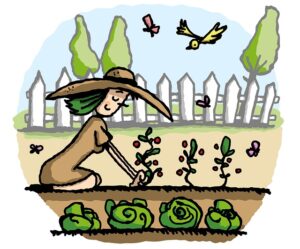Yard waste removal and recycling through composting are vital for sustainable gardening. This practice enriches soil, reduces environmental impact by diverting organic waste from landfills, and promotes robust plant growth. Gardeners can create compost at home using either an open-air pile or enclosed bin, with regular turning to maintain optimal temperature and aeration. Finished compost can be used in garden beds or mixed into houseplant soil for enhanced nutrient delivery and improved soil health.
“Maximise your gardening potential with compost creation! This comprehensive guide explores the benefits of composting for gardeners, focusing on sustainable yard waste removal and recycling. Learn how transforming kitchen scraps and yard debris into nutrient-rich compost enhances soil health, reduces environmental impact, and fosters a thriving garden ecosystem. We’ll break down the step-by-step process, empowering you to become a master composter while contributing to a greener planet.”
- Understanding Yard Waste and Its Impact on the Environment
- The Benefits of Composting for Gardeners
- Step-by-Step Guide to Creating Effective Compost at Home
Understanding Yard Waste and Its Impact on the Environment

Yard waste, including organic materials like lawn clippings, garden trimmings, and food scraps, is a significant aspect of household and gardening activities. However, improper disposal can lead to environmental harm. When yard waste ends up in landfills, it contributes to methane emissions, a potent greenhouse gas, exacerbating climate change. Additionally, it takes up valuable space, potentially prolonging the decomposition process and causing soil contamination.
Through responsible practices such as composting and recycling, garden enthusiasts can significantly reduce their environmental footprint. Compost creation not only diverts yard waste from landfills but also enriches garden soil with essential nutrients, promoting healthier plant growth. Effective yard waste removal and recycling are essential steps towards fostering a more sustainable gardening culture, benefiting both the environment and the quality of our gardens.
The Benefits of Composting for Gardeners

Composting is a powerful tool for garden enthusiasts, offering numerous benefits that extend far beyond yard waste removal and recycling. By creating their own compost, gardeners can enrich soil structure, promoting better water retention and nutrient distribution. This natural process enhances plant growth by providing essential minerals and vitamins, leading to healthier, more vibrant gardens.
Moreover, composting reduces the environmental impact of organic waste. Instead of sending yard trimmings to landfills, where they produce greenhouse gases, gardeners can recycle these materials at home. This sustainable practice not only minimizes waste but also contributes to a greener, more eco-friendly approach to gardening.
Step-by-Step Guide to Creating Effective Compost at Home

Creating effective compost at home is an eco-friendly way to reduce yard waste removal and recycling efforts, benefiting both your garden and the environment. Here’s a step-by-step guide to help you get started:
1. Select a Composting Method: Choose between open-air pile or enclosed bin composting. An open-air pile is simpler but requires more maintenance, while an enclosed bin maintains temperature better and discourages pests, producing finished compost faster.
2. Gather Organic Materials: Collect yard waste like leaves, grass clippings, and vegetable scraps from your kitchen. Avoid adding meat, dairy, diseased plants, or pet waste to prevent pest attraction and disease spread. Aim for a balance of nitrogen-rich (green) materials (like food scraps and fresh plant trimmings) and carbon-rich (brown) materials (such as dry leaves and straw).
3. Build Your Compost Pile: Layer the organic materials in your chosen container, ensuring proper aeration by leaving spaces between layers. Moisten the pile gently with water if it feels dry to touch, but avoid making it sopping wet.
4. Maintain Optimal Conditions: Turn or stir the compost regularly to introduce oxygen and speed up decomposition. Keep the pile at an optimal temperature (around 130-160°F) by adjusting the layering of green and brown materials.
5. Monitor and Use Compost: Regularly check for pests or unpleasant odors, which may indicate issues with your composting process. Once the compost turns dark brown, crumbly, and earthy, it’s ready to use. Spread it in your garden beds or mix it into houseplant soil for healthier, more vibrant growth.
For garden enthusiasts, composting is a powerful tool that not only enriches soil but also promotes sustainable yard waste removal and recycling. By understanding the environmental impact of yard waste and embracing composting practices, individuals can contribute to a greener planet while fostering healthy gardens. Following the simple step-by-step guide provided, anyone can create effective compost at home, transforming organic waste into valuable resources that benefit both nature and nurture.






